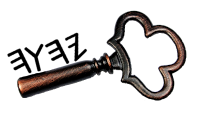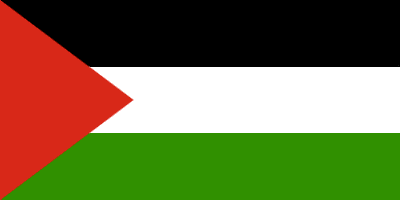Index:
Introduction:
This page is an outlet for news and information that does not seem to appear in the main stream media.
The Palestinians have never understood the moral basis for the demand by Americans and others that they must bear the burden of compensating the Jews of Europe for their alleged savage persecution. Dispersed and reviled, oppressed everywhere, their story is one of unremitting tragedy. However one may adjudicate conflicting claims, it is callous hypocrisy to prate of "moral impulses" and "humanitarian commitments" while ignoring their fate and denying their claim to human and national rights.
With Zionist Israeli's continued attempt to ethnically cleanse the Holy Land, the fate of the Palestinian people has come into the spotlight. This page is an attempt to bring facts that been hidden or supressed to light and to dispute alleged 'statement of facts' that are simply untrue.
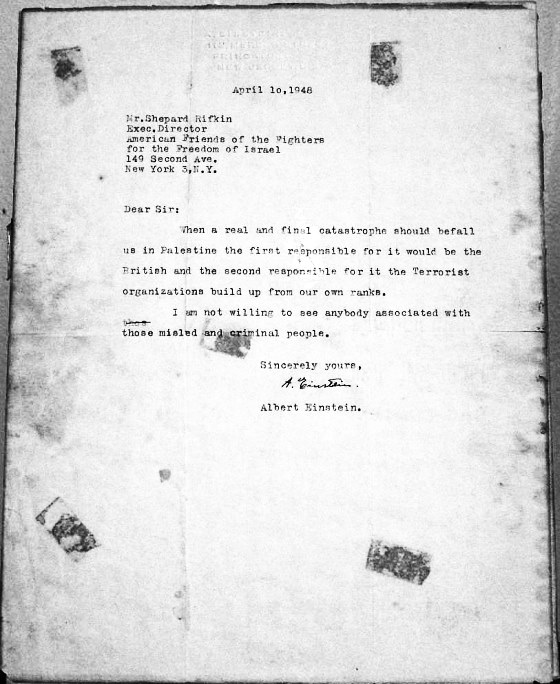
I came to America because of the great, great freedom which I heard existed in this country. I made a mistake in selecting America as a land of freedom, a mistake I cannot repair in the balance of my lifetime.Albert Einstein, 1947
MYTHS ABOUT PALESTINE:
MYTH 1:
The words "Palestine" and "Palestinian" did not exist prior to the beginning of the Zionist take over of the land in 1947/1948.
This falsehood can easily be disproved by such works as "The Histories" by Herodotus of Halicarnassus (484-425 BC), "The Complete Works of Josephus" (translated 1737), "Targum Jonathan to the Prophets" Pinkhos Churgin (1927), 1945 British Mandate Report, and "Treatise on the Biblical Calendar", second edition by Herb Solinsky among many others.
Specific references to "Palestine" date back nearly five hundred years before "the time of Jesus." In the 5th Century BCE, Herodotus, the first historian in Western civilization, referenced "Palestine" numerous times in his chronicle of the ancient world, The Histories, including the following passage describing "Syrians of Palestine":
...they live in the coastal parts of Syria; and that region of Syria and all that lies between it and Egypt is called Palestine." (VII.89) The above translation by Harry Carter is featured in the 1958 Heritage Press edition of Herodotus' famous work. Both older and newer versions corroborate the accuracy of the reference. A. D. Godley's 1920 translation of the crucial line states, "This part of Syria as far as Egypt is all called Palestine", while Robin Waterfield's 1998 updated Oxford translation renders the passage this way: "This part of Syria, all the way to the border with Egypt, is known as Palestine.
A hundred years later, in the mid-4th Century BCE, Aristotle made reference to the Dead Sea in his Meteorology.
Again if, as is fabled, there is a lake in Palestine, such that if you bind a man or beast and throw it in it floats and does not sink, this would bear out what we have said," he wrote. "They say that this lake is so bitter and salt that no fish live in it and that if you soak clothes in it and shake them it cleans them." (II.3)
Two hundred years later, in the mid-2nd Century BCE, ancient geographer Polemon wrote of a place
"not far from Arabia in the part of Syria called Palestine,"
while Greek travel writer Pausanias wrote in his Description of Greece,
In front of the sanctuary grow palm-trees, the fruit of which, though not wholly edible like the dates of Palestine, yet are riper than those of Ionia. (9.19.8)
Despite the Zionists' claim "the Romans didn't rename Judea as 'Palestina' until a hundred years after the death of Jesus," contemporaries of Jesus also routinely referred to Palestine as, well, Palestine. For instance, in the first decade of the 1st Century, the Roman poet Ovid mentioned Palestine in both his famed mythological poem Metamorphoses and his erotic elegy The Art of Love. He also wrote of "the waters of Palestine" in his calendrical poem Fasti. Around the same time, another Latin poet Tibullus wrote of "the crowded cities of Palestine" in a section "Messalla's Triumph" in his poem Delia.
The noted Alexandrian Jewish philosopher Philo, writing around the 1st Century CE, opined,
"Also Syria in Palestine, which is occupied by no small part of the very populous nation of the Jews, is not unproductive of honourable virtue." (XII.75)
The Jewish historian Josephus (c.37-100 CE) was born and raised in Jerusalem, a military commander in Galilee during the First Jewish Revolt against the occupying Roman authority, acted as negotiator during the Siege of Jerusalem in 70 CE and later penned vital volumes of Levantine Jewish history. His The Jewish War, Antiquities of the Jews, and Against Apion all contain copious references to Palestine and Palestinians. Towards the end of Antiquities, Josephus writes,
"I shall now, therefore, make an end here of my Antiquities; after the conclusion of which events, I began to write that account of the war; and these Antiquities contain what hath been delivered down to us from the original creation of man, until the twelfth year of the reign of Nero, as to what hath befallen the Jews, as well in Egypt as in Syria and in Palestine, and what we have suffered from the Assyrians and Babylonians, and what afflictions the Persians and Macedonians, and after them the Romans, have brought upon us; for I think I may say that I have composed this history with sufficient accuracy in all things." (XX.11.2)
The claim that the Roman emperor Hadrian, eager to punish Jewish inhabitants of Judea after the Bar Kokhba Revolt, officially changed the name of the region to "Syria Palaestina" or simply "Palestine" in 135 CE and forced the Jewish community into exile is dubious at best, especially when, by then, the terms "Syrian Palestine" and "Palestine" had already been in use for over six hundred years.
Etymological considerations:
I was curious as to where the name Palestine came from since it is referred to as 'the land of Canaan' in Scripture. It appears that perhaps the name was changed to Palestine by the Greeks after the House of Israel and the House of Judah were exiled from the land.
The English term "Palestine" itself derives from the Latin Palaestīna, which, in turn, derives from the Koine Greek Παλαιστῑ́νη, Palaistī́nē, used by the world's first known historian, Herodotus, in the 5th century BCE. Per Martin Noth, the name likely comes from a proto-Semitic word, albeit there is a strong similarity between Palaistī́nē and palaistês, the Greek word for "wrestler/rival/adversary", which has the same etymological meaning as the Hebrew word "Israel." This was expanded by David Jacobson to theorize the name being a portmanteau of the word for Philistines with a direct translation of the word Israel into Greek (in concordance with the Greek penchant for punning on place names.)
https://en.wikipedia.org/wiki/Timeline_of_the_name_Palestine
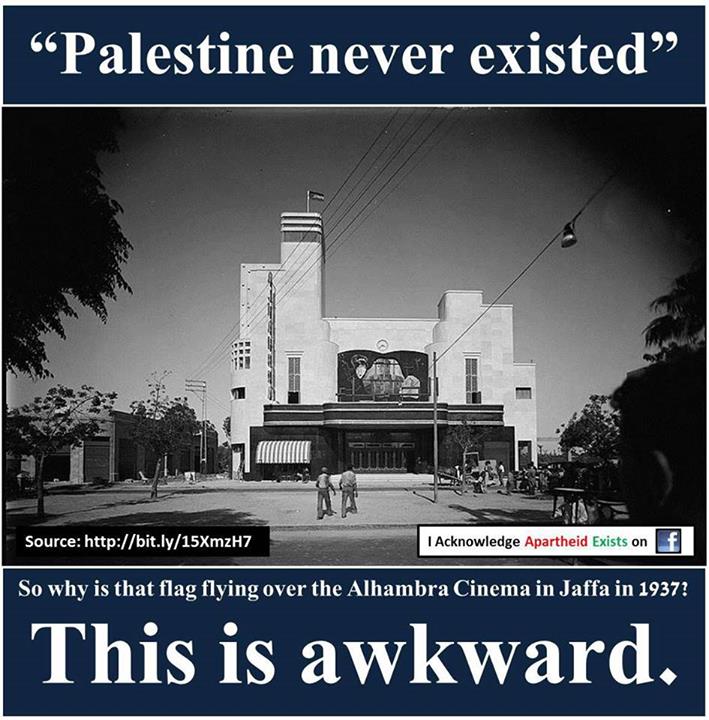
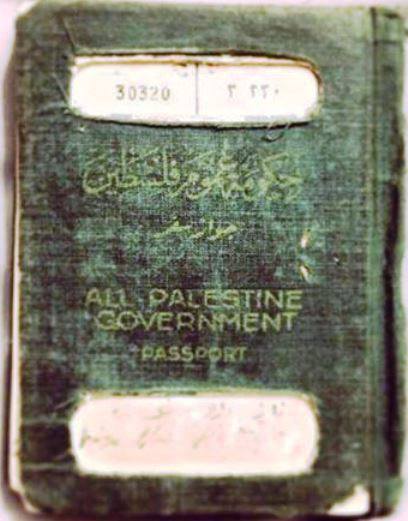
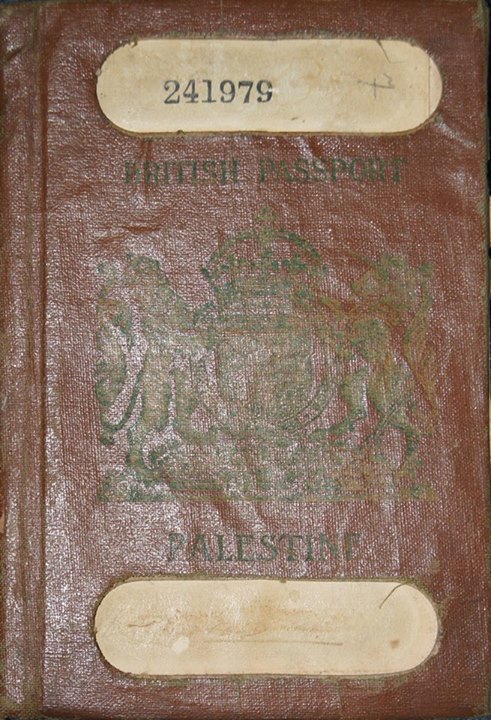
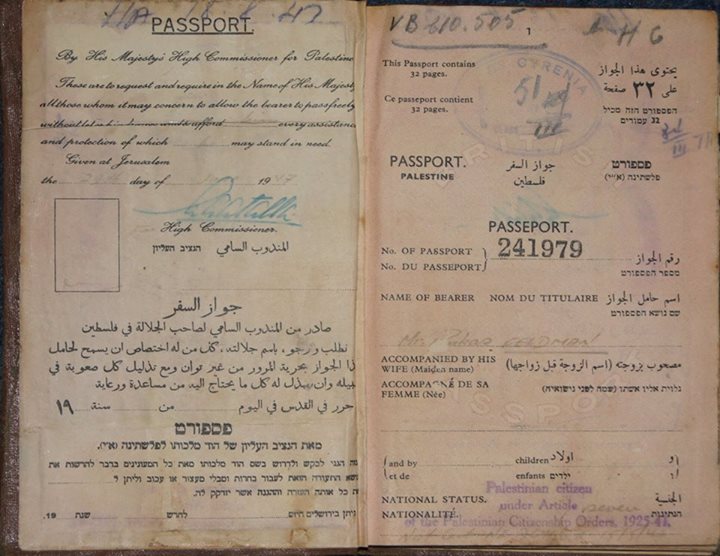
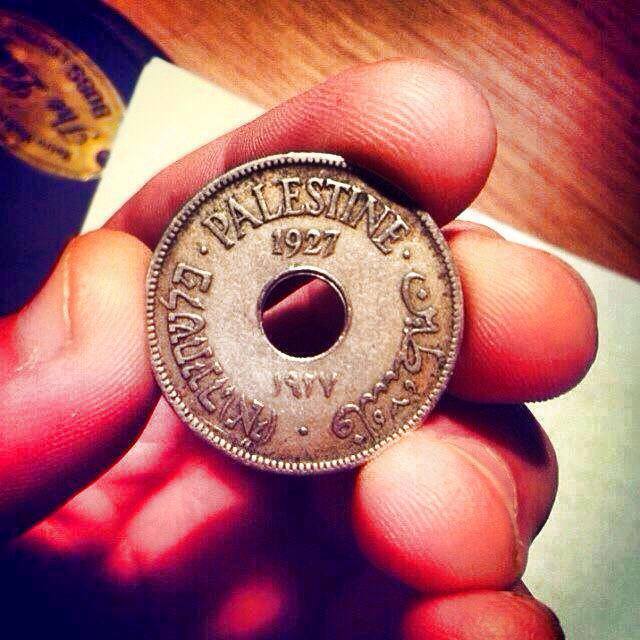
Notice the Hebrew and Arabic writing.
MYTH 2:
Prior to the arrival of the European Jews, the Holy Land was a desert waste land and that the Jews "made the desert bloom".
The easily verifiable facts contained in the following links clearly show that the land was not a wasteland and that it was the Palestinians who "made the desert bloom".
Tell Me Again, Who Made The Desert Bloom? (WWW.ENVIROSAGAINSTWAR.ORG)
Tell Me Again, Who Made The Desert Bloom? (WWW.ALETHONEWS.WORDPRESS.COM)
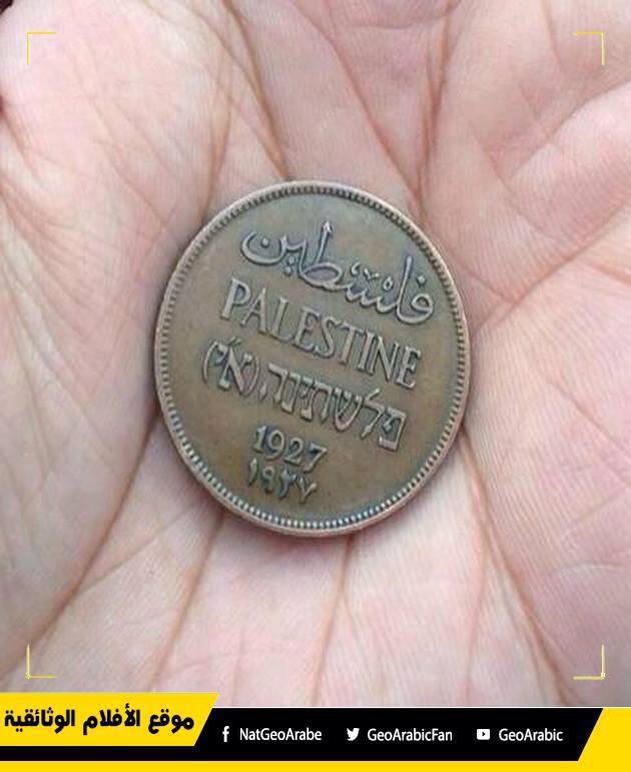
Palestinian coin minted 1927. Notice the Hebrew and Arabic writing.
MYTH 3:
Palestine was “a land without a people for a people without a land,”.
The easily verifiable facts contained in the 1937 Peel Commission Report, 1945 British Mandate Report, and Tell Me Again, Who Made The Desert Bloom? shows that Palestine was indeed inhabited and had a thriving agricultural society.
The Zionist enterprise saw itself as providing “a land without a people for a people without a land,” to use its own unfortunate phrase. Palestine was not a land without a people, neither in 1897 nor in 1917 nor in 1948, To put it as starkly as possible: The Zionist movement aimed at establishing a Jewish state in Palestine, a land already inhabited by another people awakening to national identity. To this people the Zionist enterprise could only have appeared as an attempt by a culturally alien group to colonize and eventually gain control of their country.
Land was bought from absentee landlords for exclusively Jewish settlements; the peasants, the actual cultivators of the land, were dispossessed and -- if they resisted -- suppressed by the Turkish or British overlords of the country. Campaigns were launched to boycott Arab produce so as to encourage Jewish agricultural (and later industrial) enterprise. Bitter struggles were fought to force Jewish employers to hire only Jewish workers rather than cheaper Arab labor.
MYTH 4:
The Hebrew people were exiled or driven out of the Holy Land during the conquest of Jerusalem and the destruction of the 2nd temple.
A growing body of evidence is emerging that shows this was NOT the case. It appears that the Romans drove the Hebrews out of Jerusalem and destroyed the Hebrew temple as they knew this was the focus of the Hebraic faith. The Romans were not interested in farming the land but were very interested in exacting tariffs from the Hebrew fellahin (peasants) who remained in the land.
And the evidence for the Jewish ancestry of the Palestinians is persuasive - very persuasive, when all the information is taken into account. First, there are the names - not just place names, but family names. "Many villages here have names that are not Arabic, and very rarely appear in other Arab lands. Among such names are Kafr Yasif, Kafr Kana, Kafr Yatta, Kafr Manda, Kafr Samia, and many others," says Misinai. Indeed, Ben-Zvi in his 1932 book The Peoples of Our Land wrote that west of the Jordan River, 277 villages and sites - nearly two-thirds! - had names that were similar to or the same as the Jewish settlements on the same sites during Second Temple times. That in itself, said Ben-Zvi in his book, is proof that the inhabitants of those villages were Jews who had remained after the destruction. "If in fact the Jewish settlements became inhabited by entirely different people, they would not have preserved the Hebrew names (which in fact, did occur in most of those settlements where the population did change, such as in the eastern part of the Jordan). Such is not the case in western land of Israel where the old Hebrew names are preserved, which proves the continuity of settlement in this place," he wrote. It's not just place names; many Palestinians have Hebrew-derived family names as well, reflecting their origins, says Misinai. Already in the 1860s, "Colonel Condor of the Institute for Israel Research found biblical names among Palestinian fellahin [peasants]. Many of these names have no root in the Arabic lexicon. Large, distinguished families from various parts of the country carry Hebrew names or Jewish family names." Among the surnames of some of the larger clans are the Abu Khatsiras, who control much of the fishing in Gaza; Elbaz, a family of Jews who immigrated from Morocco; Abulafia, the family with the famous Jaffa bakery which is descended from the 13th-century Spanish kabbalist Rabbi Abraham Abulafia; the Almogs of Jenin; the Dawouda (Davids) of Hebron; and even, believe it or not, 4,000 forced converts to Islam named Cohen living in Jordan. Not only that: The Palestinian dialect of Arabic contains many terms and words not found in "standard" Arabic - the result of the integration of Hebrew and Aramaic into the Arabic they were forced to learn after the various Arab and Turkish conquests.
The Holy Land - A Historical Perspective
The Holy Land In The 1st - 5th Century B.C./B.C.E.:
Their Love For Tilling the Soil is Truly Great - Daily life in Palestine from the first through fifth centuries.
Interesting to note how this Jewish source refers to the Holy Land as Palestine.
Page 1. (WWW.MYJEWISHLEARNING.COM) (2014/0815)
Page 2. (WWW.MYJEWISHLEARNING.COM) (2014/0815)
Page 3. (WWW.MYJEWISHLEARNING.COM) (2014/0815)
Huqoq Excavation Project (HTTP://HUQOQEXCAVATIONPROJECT.ORG) (2014/0831)
"The Huqoq Excavation Project is excavating a fifth-century C.E. synagogue at Huqoq, an ancient village in Israel's Lower Eastern Galilee located three miles west of Magdala (home of Mary Magdalene) and Capernaum (where Jesus taught in the synagogue). Below, excavation director Jodi Magness and mosaics specialist Karen Britt discuss a new mosaic discovered during the 2014 excavation season."
Huqoq 2014: Update from the Field (WWW.BIBLICALARCHAELOLOGY.ORG) (2014/0831)
Why is there a synagogue in Palestine during the 5th century C.E. if all the Hebrews were exiled by the Romans?
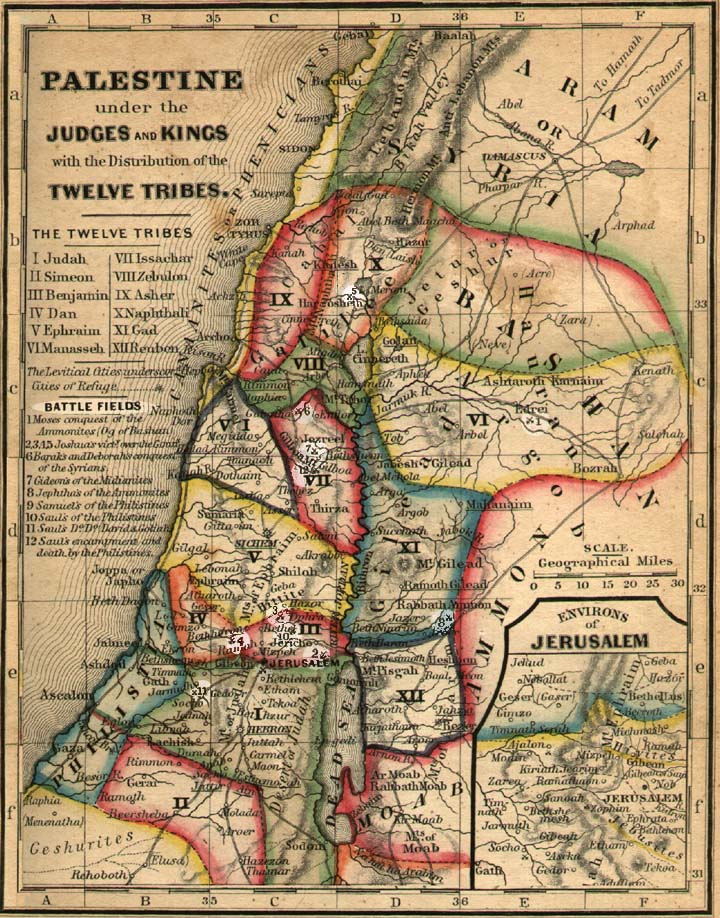
Battlefields of O.T. and Distribution of 12 Tribes (map)
http://www.blueletterbible.org/images/maps/Otest/battles2.cfm
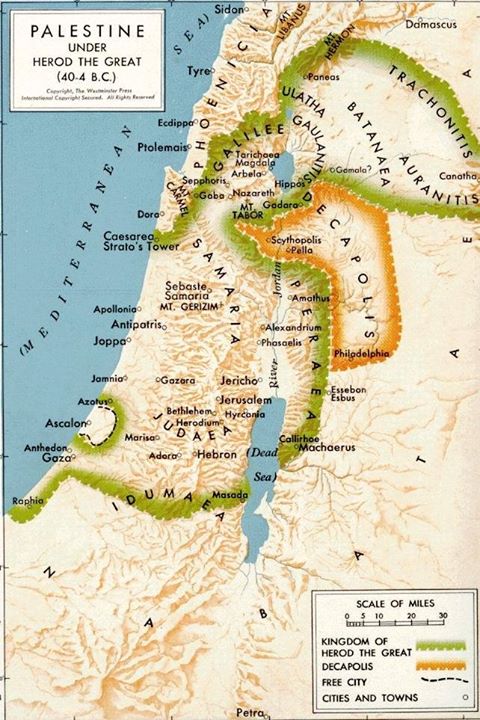
The Holy Land In The 19th Century A.D./C.E.:
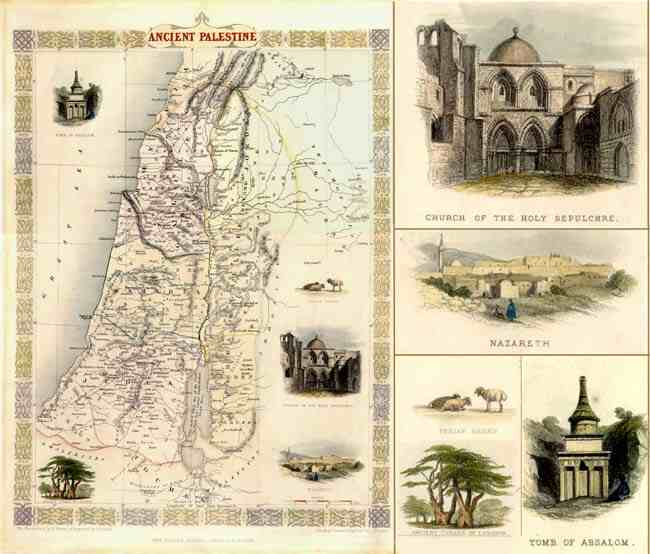
https://whatreallyhappened.com/IMAGES/antiquepalestine1851.jpg
(2012-0308)
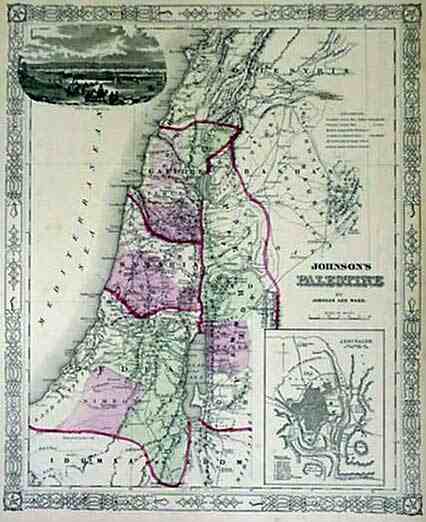
https://whatreallyhappened.com/IMAGES/antiquepalestine1864.jpg
(2012-0308)
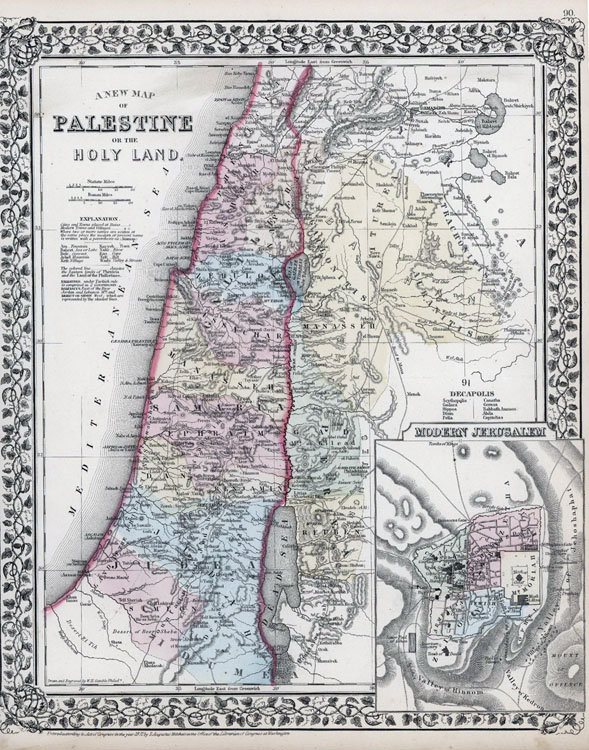
https://whatreallyhappened.com/IMAGES/antiquepalestine1866.jpg
(2012-0308)
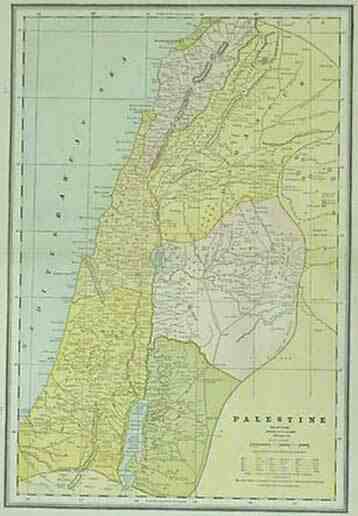
https://whatreallyhappened.com/IMAGES/antiquepalestine1887.jpg
(2012-0308)
The Holy Land In The 20th Century A.D./C.E.:
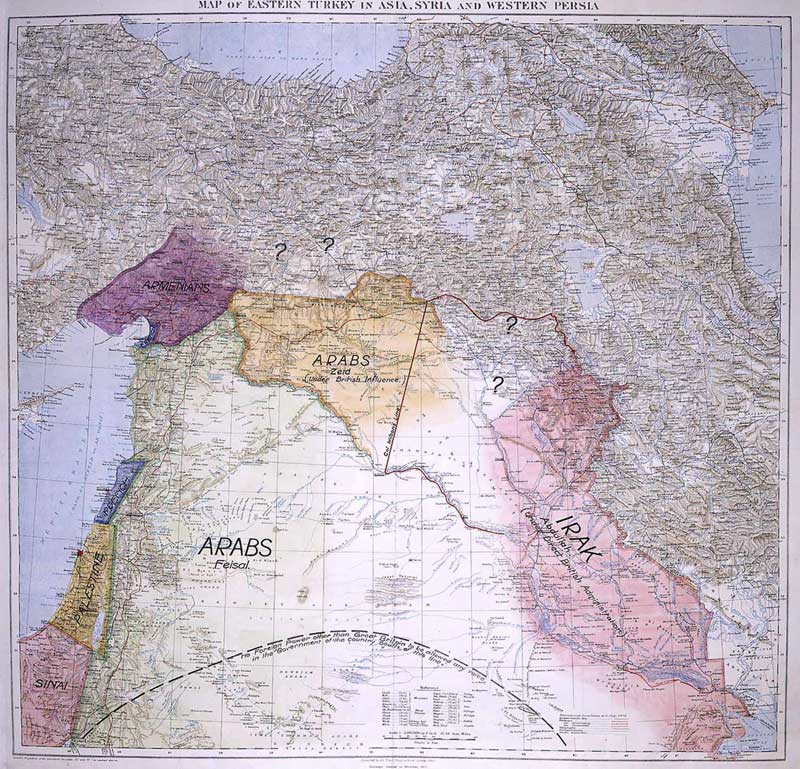
https://whatreallyhappened.com/IMAGES/Lawrence_map.jpg
(2012-0308)
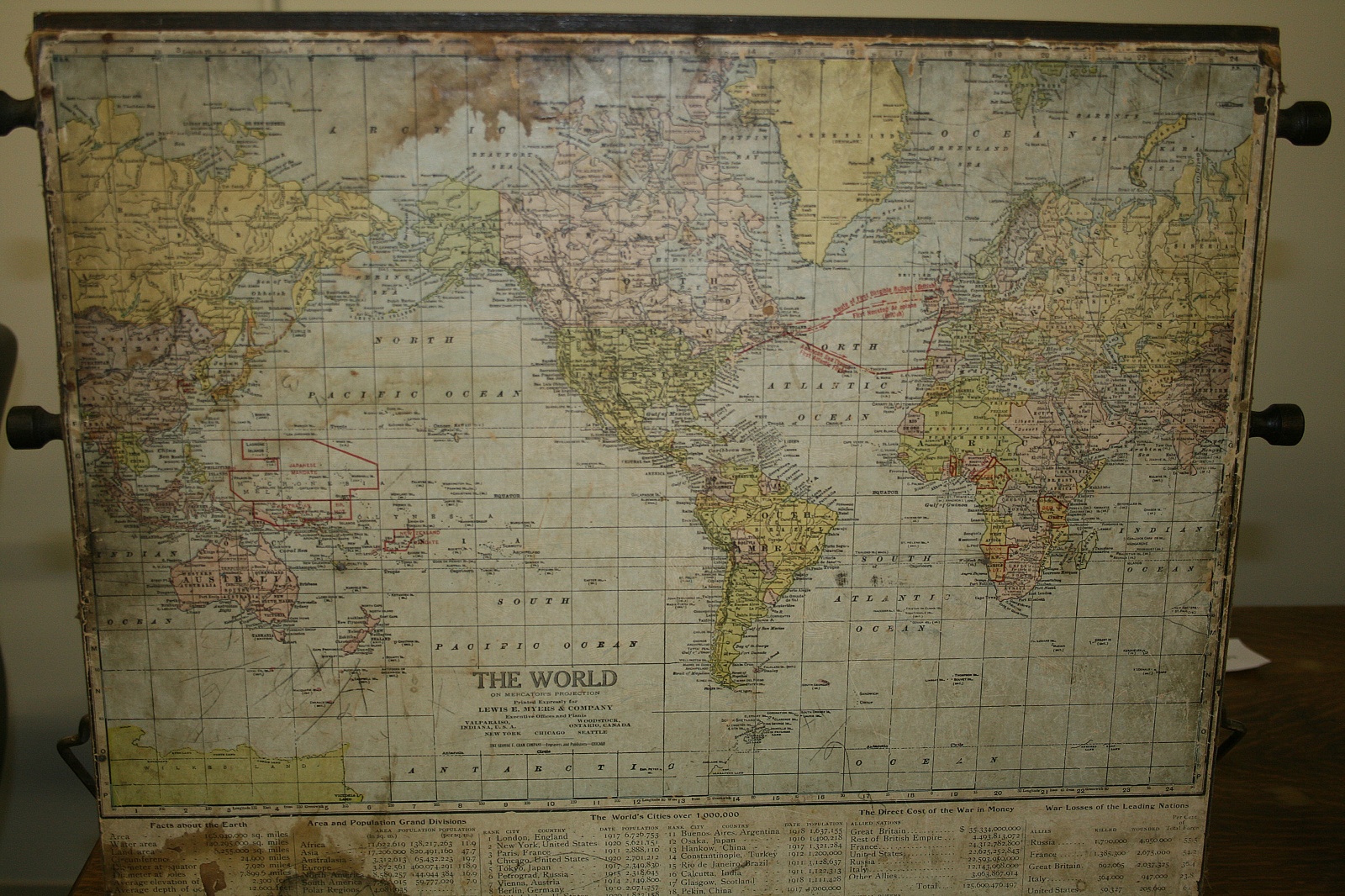
https://whatreallyhappened.com/IMAGES/PalestineMaps/IMG_5202.JPG
(2012-0308)
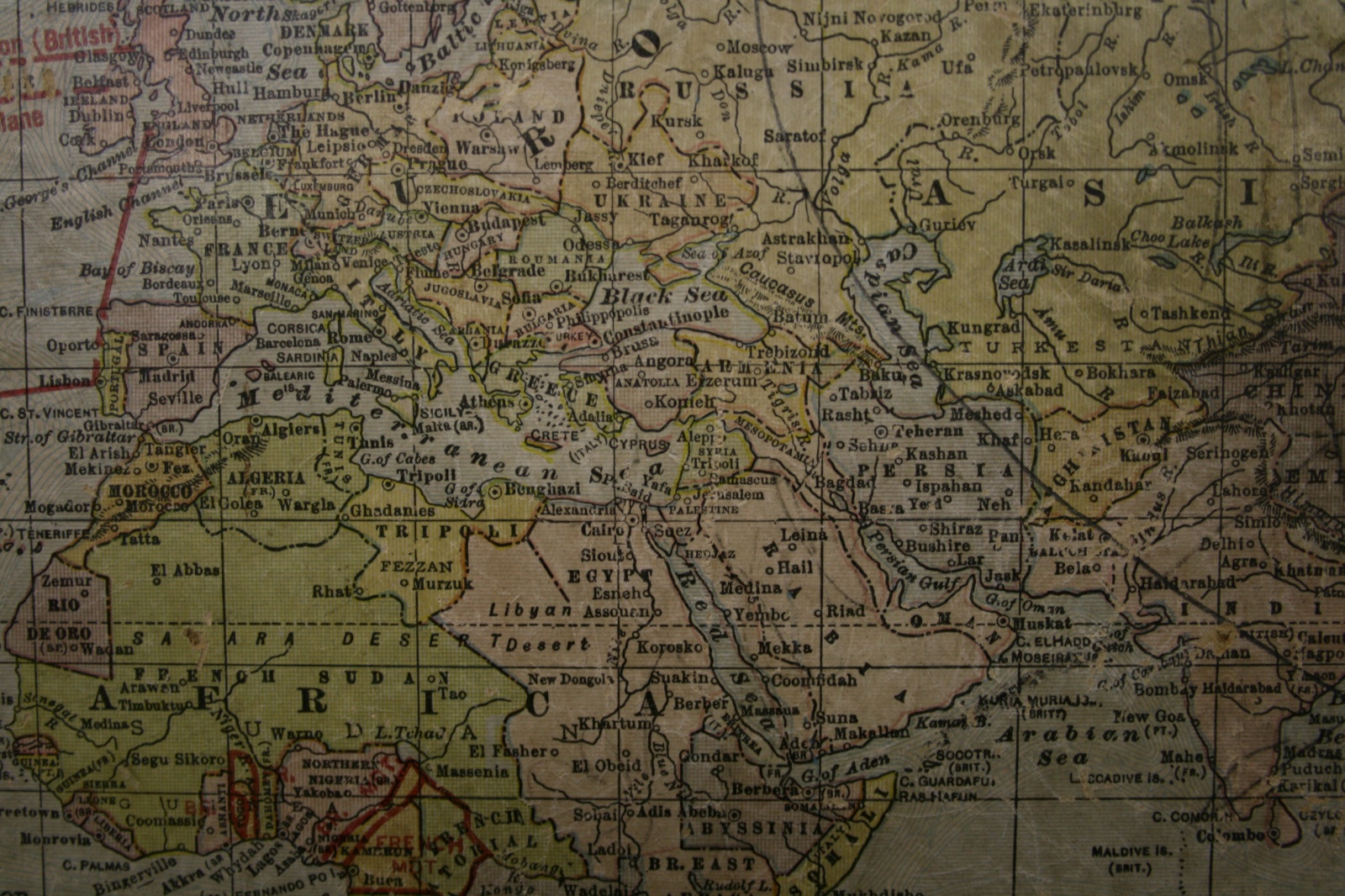
https://whatreallyhappened.com/IMAGES/PalestineMaps/IMG_5205.JPG
(2012-0308)
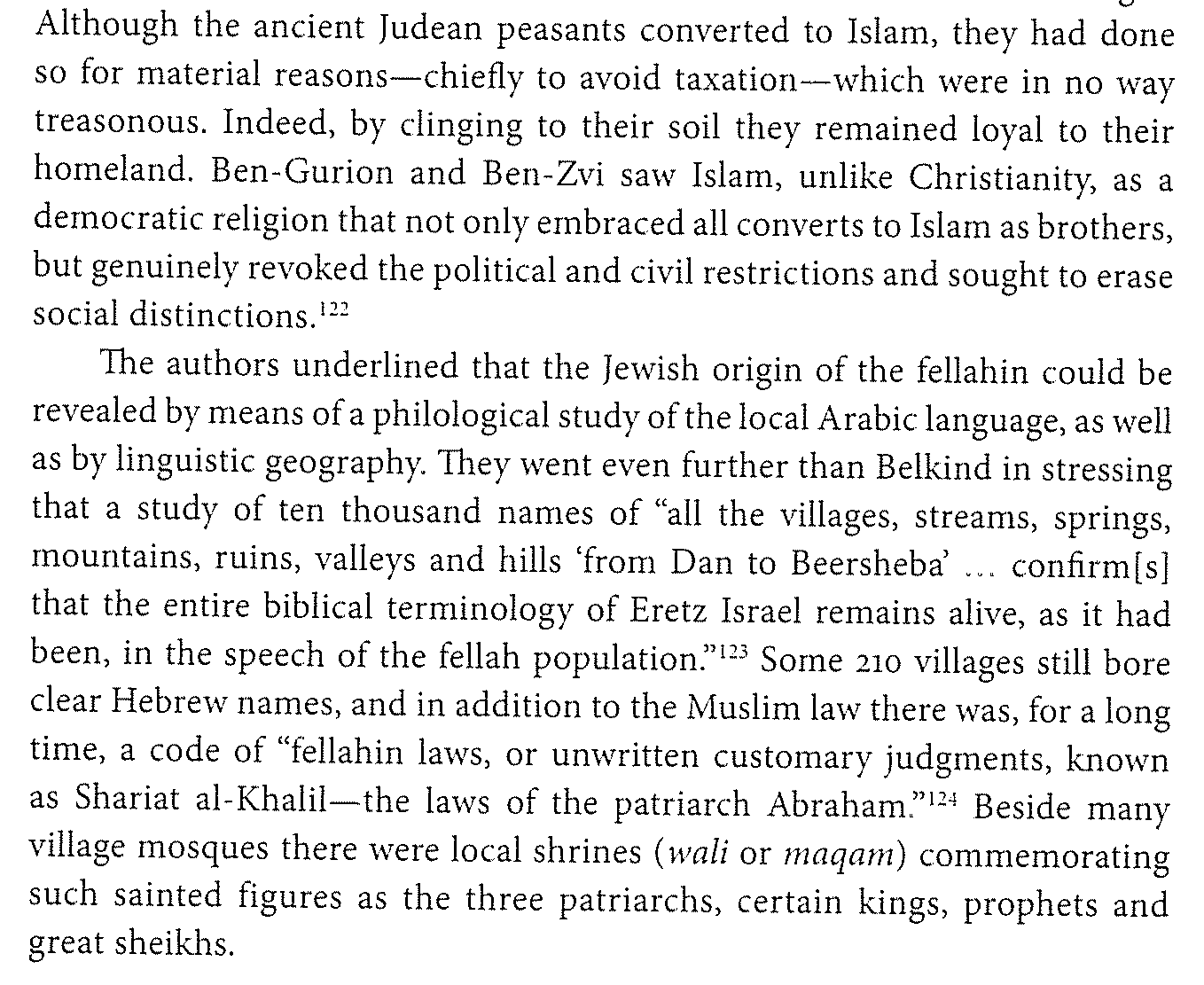
Excerpt from "Eretz Israel in the Past and in the Present" by David Ben-Gurion and Itzhak Ben-Zvi (1918) chapter 2.
"The Invention of the Jewish People"
by Shlomo Sand pg 185. par c.
(My Note:) fellahin - a native peasant or laborer in an Arab country.

Excerpt from "Eretz Israel in the Past and in the Present" by David Ben-Gurion and Itzhak Ben-Zvi (1918) chapter 2.
"The Invention of the Jewish People"
by Shlomo Sand pg 185. par b.
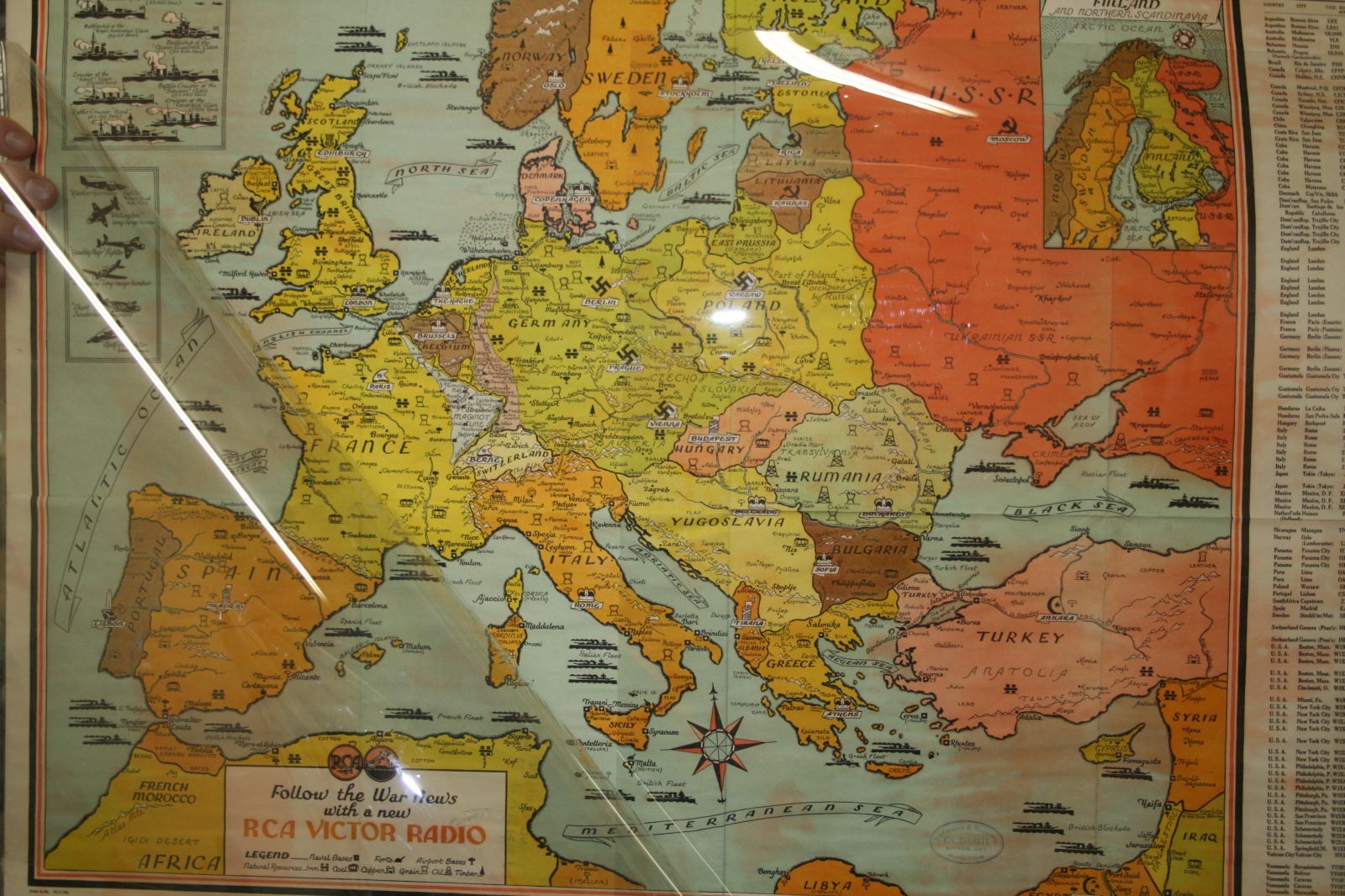
https://whatreallyhappened.com/IMAGES/PalestineMaps/IMG_5208.JPG
(2012-0308)
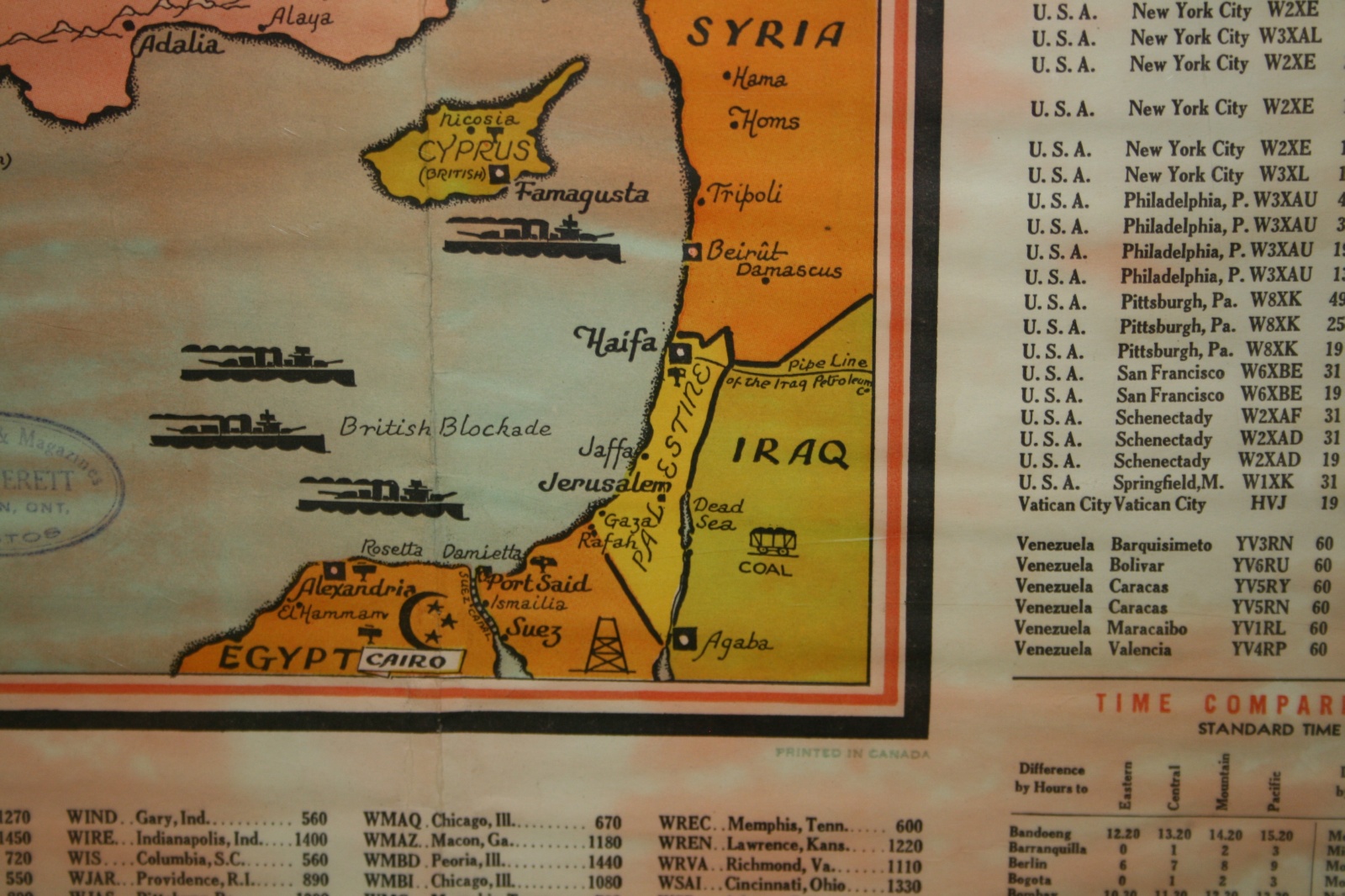
https://whatreallyhappened.com/IMAGES/PalestineMaps/IMG_5210.JPG
(2012-0308)
1939
The White Paper of 1939, also known as the MacDonald White Paper after Malcolm MacDonald, the British Colonial Secretary who presided over it, was a policy paper issued by the British government under Neville Chamberlain in which the idea of partitioning the Mandate for Palestine, as recommended in the Peel Commission Report of 1937, was abandoned in favour of creating an independent Palestine governed by Palestinian Arabs and Jews in proportion to their numbers in the population by 1939 (section I). A limit of 75,000 Jewish immigrants was set for the five-year period 1940-1944, consisting of a regular yearly quota of 10,000, and a supplementary quota of 25,000, spread out over the same period, to cover refugee emergencies. After this cut-off date, further immigration would depend on the permission of the Arab majority (section II). Restrictions were also placed on the rights of Jews to buy land from Arabs (section III).
The White Paper was published as Cmd 6019. It was approved by the House of Commons on 23 May 1939 by 268 votes to 179.
http://en.wikipedia.org/wiki/White_Paper_of_1939
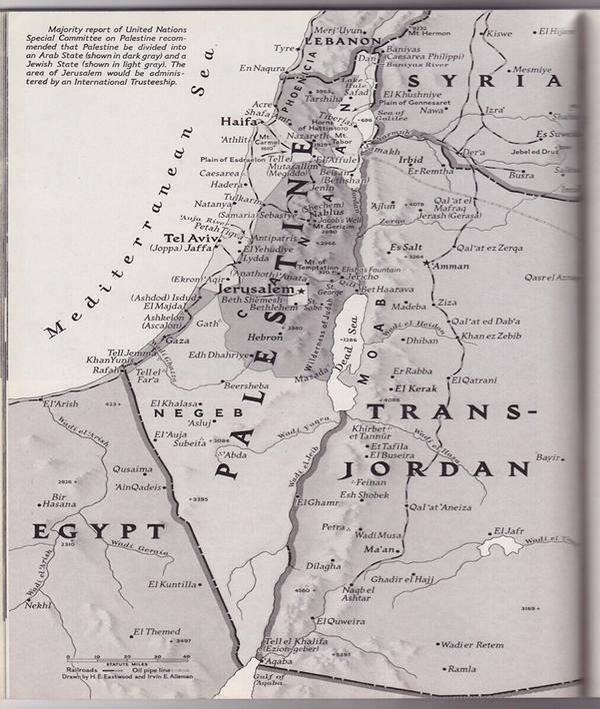
1947 United Nations Proposed division of Palestine
1948
PALESTINIAN EXODUS (al Nakba):
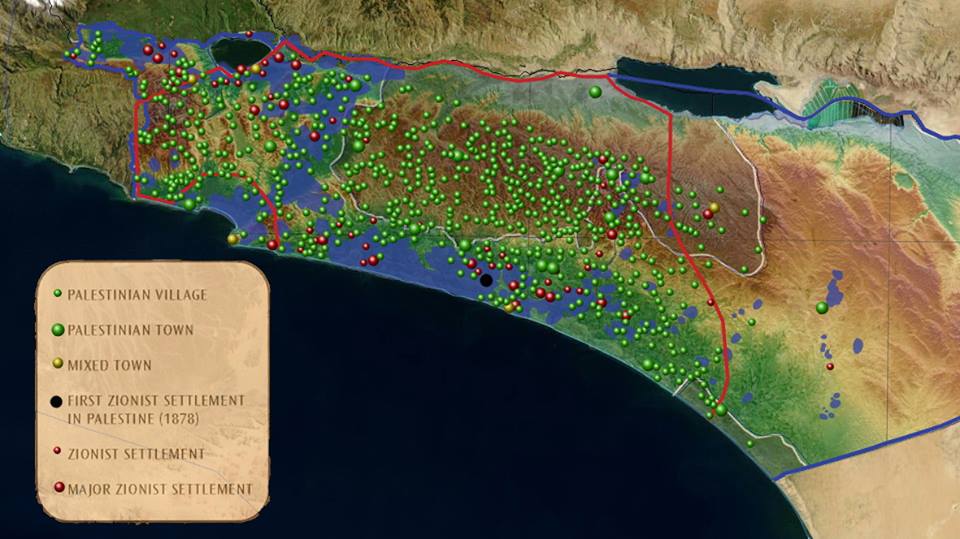
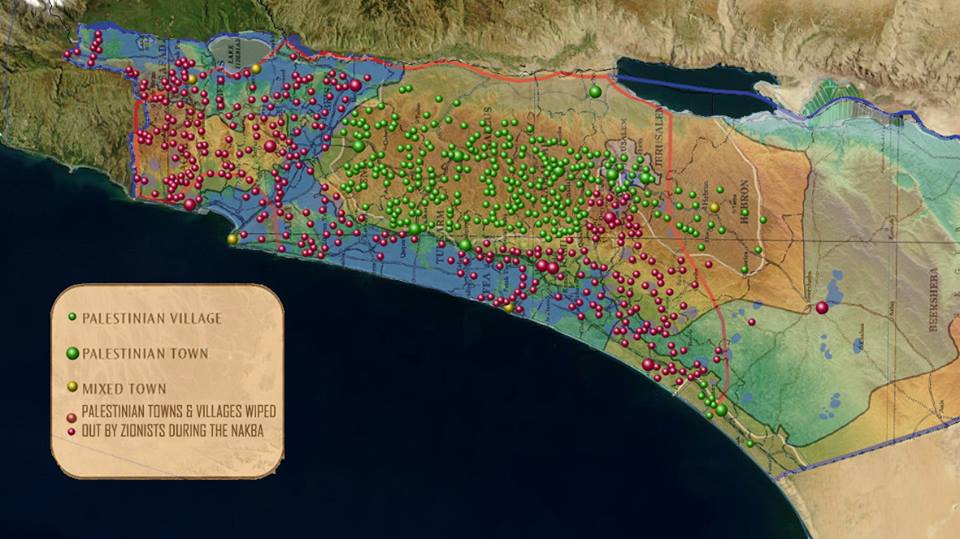
A map of the Palestinian cities attacked by the Zionists.
https://www.zochrot.org/
PRO ISRAEL POSITION:
Yet another historical event the Israeli's are trying to rewrite in their favor.
"http://www.jewishfederations.org/page.aspx?id=121275
NEUTRAL POSITION:
1948 Palestinian expulsion and flight (WWW.WIKIPEDIA.ORG 2023-0620)
Nakba (WWW.WIKIPEDIA.ORG 2023-0620)
Interesting to note how the perspective of a historical event is morphing over time.
http://en.wikipedia.org/wiki/1948_Palestinian_exodus
https://en.wikipedia.org/wiki/1948_Palestinian_expulsion_and_flight
https://en.wikipedia.org/wiki/Nakba
PRO PALESTINE POSITION:
The Washington Report: Expulsion of the Palestinians- Lydda and Ramleh in 1948 (WWW.PALESTINEREMEMBERED.COM) (2013/0312)
Scholarly Review: The Historiography of the 1948 Wars (WWW.MASSVIOLENCE.ORG) (2014/0818)
This piece shows how the Israelis used terrorism and massacres along with strategic roads held open to drive the Arab population from the land.
Up to Six Mass Graves Discovered in Jaffa, with Hundreds of Victims from 1948 (HTTP://THEREALNEWS.COM) (2014/1003)
Israelis rattled by search for truth about the Nakba (WWW.MIDDLEEASTEYE.NET) (2014/1210)
Israeli authorities turn mosque into museum (WWW.MIDDLEEASTEYE.NET) (2014/1223)
Yet another attempt by the Israelis to erase the history of the Nakba.
'The past isn't past': Palestinians and Israelis share eyewitness testimony to Nakba truth commission (WWW.NONDOWEISS.NET) (2014/1226)
"However, popular Israeli independence mythology is rife with contradictions which point to another side of the history kept under the rug. For example it is simultaneously taught that it was the Israeli army's strength and ability that won the war, while other Israeli and Zionist accounts describe the Palestinians as simply leaving their villages due to their own whims (thus negating the need for the heroism of the Israeli forces)."
Jews constituted some 10 percent of the population of Palestine in 1914, and about one third in 1947. As the Zionist enterprise progressed, as a growing percentage of the land was alienated from Arab hands, as new immigrants poured in, as a ramified network of settlements and pre-state institutions developed and Zionist leaders openly proclaimed their intention to establish a Jewish state, the Palestinian Arabs resisted in both peaceful and violent ways. Whatever the motives, intentions, hopes and dreams of the early Zionist settlers and leaders, in practice Zionism was quite understandably perceived by the Palestinian Arab people as a dire threat to their national integrity, to their homeland. It is difficult to see how things could have been otherwise. One can, in retrospect, argue that the Palestinians should have accepted the 1947 UN partition plan and been content with less than half their country, and thus perhaps they could have avoided the catastrophes that have followed. At the time the partition of their country seemed to them and to the whole Arab world as a grave injustice: they were being made to pay for Europe's crimes against the Jews.
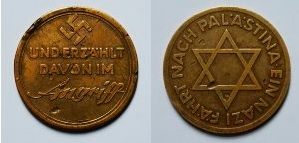
A Jewish Nazi Palestinian Coin
A good amount of photographic evidence of Palestine prior to the Zionist aggression.
http://whatreallyhappened.com/WRHARTICLES/mapstellstory.html
The Holy Land In The 21st Century A.D./C.E.:

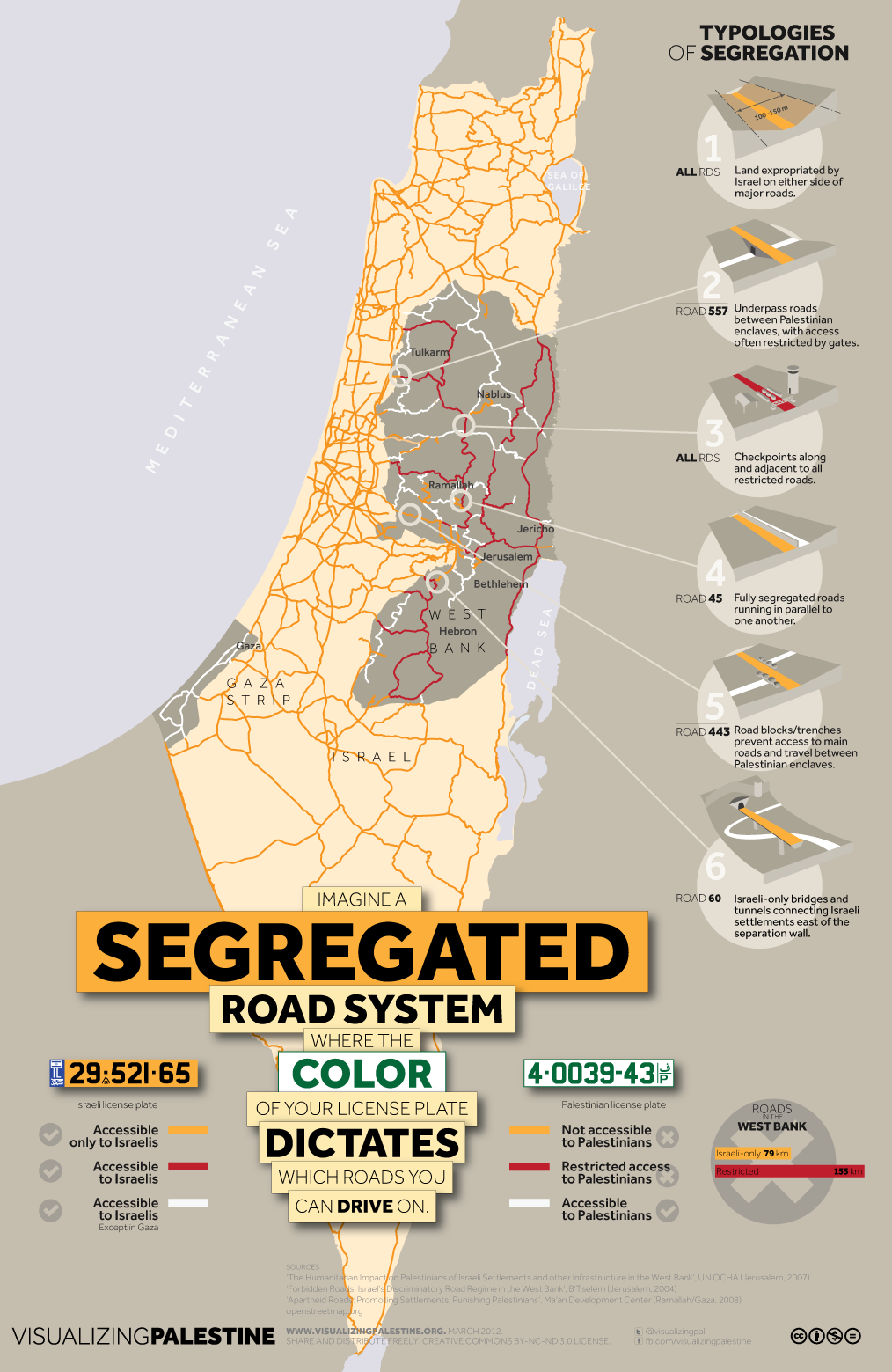
2011-0917
It is upsetting and painful that the same people who suffered one of the worst examples of genocide in history have become the executioners of the Palestinian people: it is upsetting and painful that the heritage of the Holocaust be the Nakba. And it is truly disturbing that Zionism continues to use the charge of anti-Semitism as blackmail against those who oppose their violations and crimes. Israel has, blatantly and despicably, used and continues to use the memory of the victims. And they do so to act with complete impunity against Palestine. It's worth mentioning that anti-Semitism is a Western, European, scourge in which the Arabs do not participate. Furthermore, let's not forget that it is the Semite Palestine people who suffer from the ethnic cleansing practiced by the Israeli colonialist State.
2011-0917
http://www.voltairenet.org/article171461.html
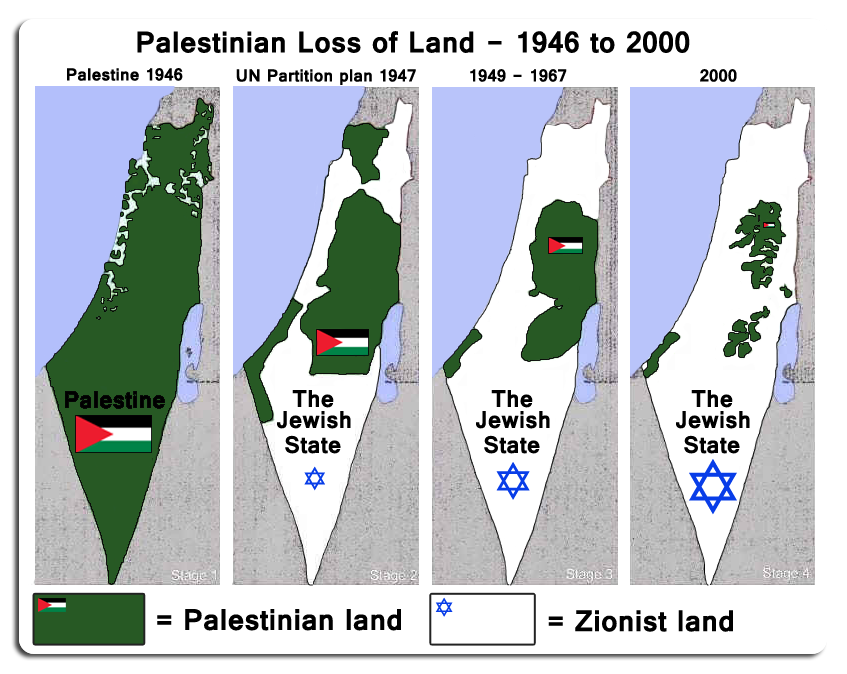
"How does a defensive action result in the total conquest of someone else's lands?
The answer is that it does not. Israel is the aggressor. The maps of Israel then and now prove it." - WRH
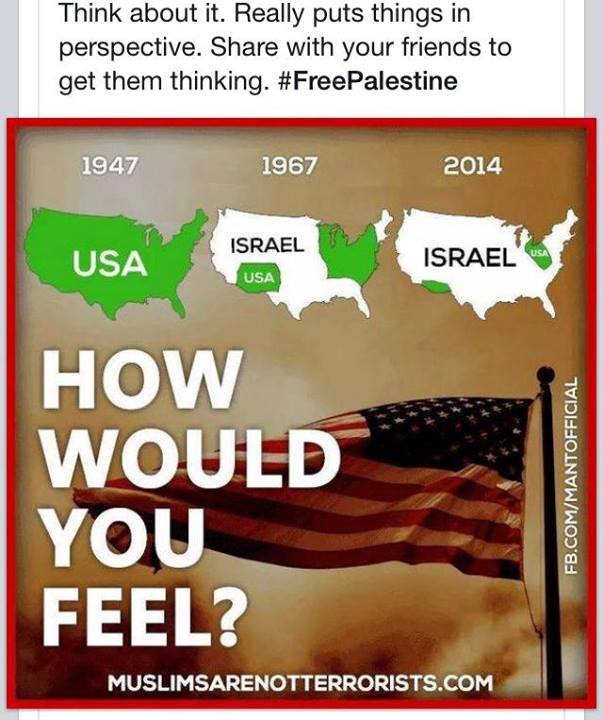
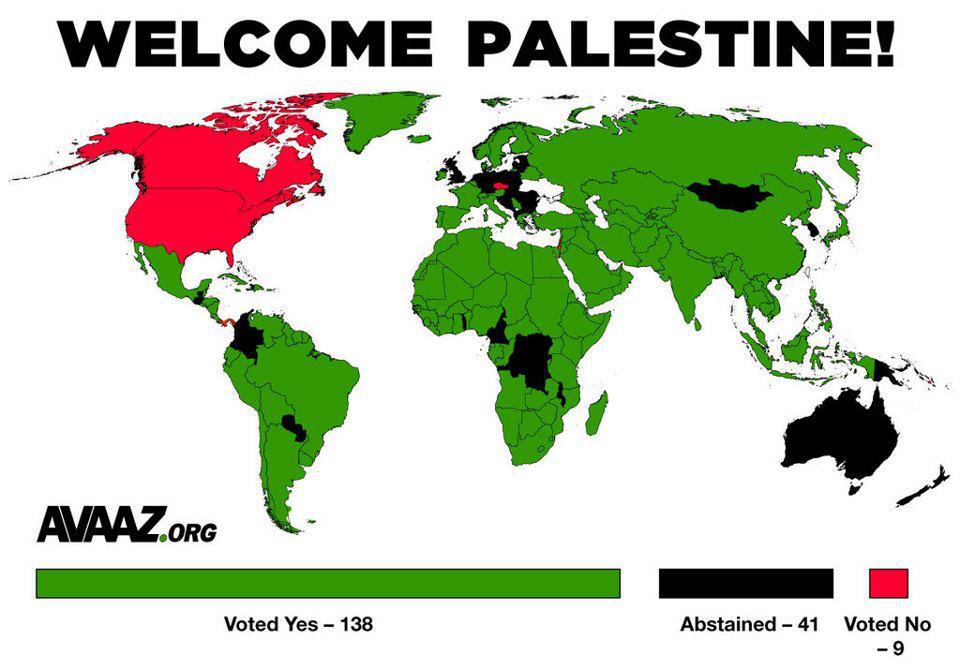
The State Of Palestine is Now Officially An Observer Member In The United Nations ..
Voting For Palestine State Results
138 Countries With
...
9 Countries against
41 Countries abstained
Israeli Airstrike 2012/1118
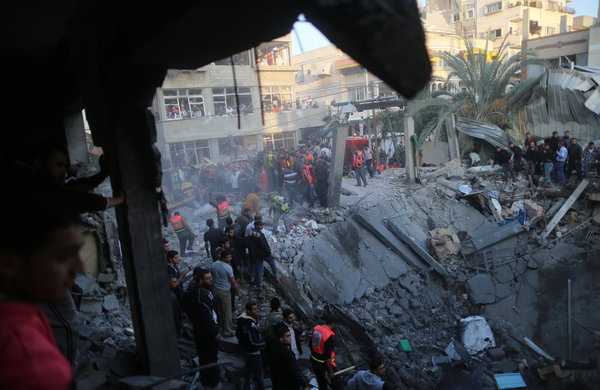
Palestinians gathered around a crater caused by an Israeli strike.
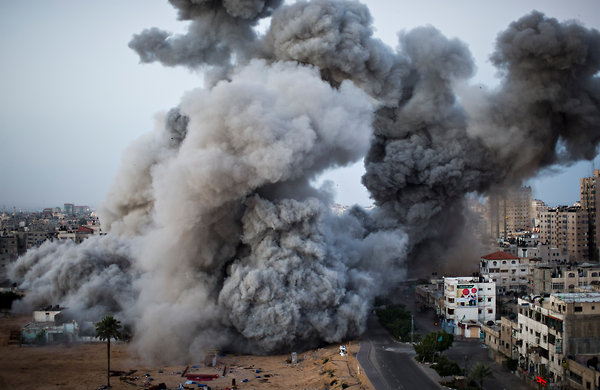
An assault on Gaza City killed at least 11 people, including children.
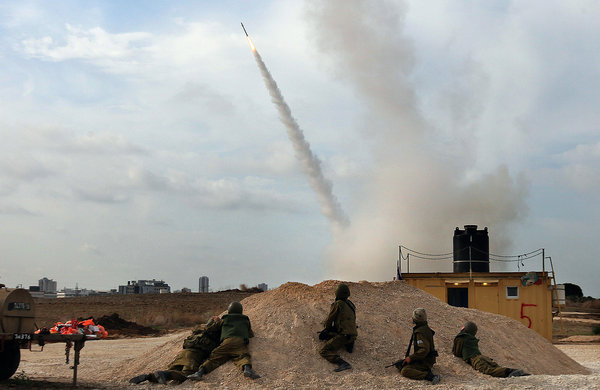
Israel's defense shield fired a missile in response to a rocket attack.
Interesting to note how the media always seems to portray Israeli attacks as 'defensive' or 'in response to'.

Israel's premier warned of a “significant” expansion in the onslaught
Stop The Blank Check (WWW.STOPTHEBLANKCHECK.ORG) (2012/1202)
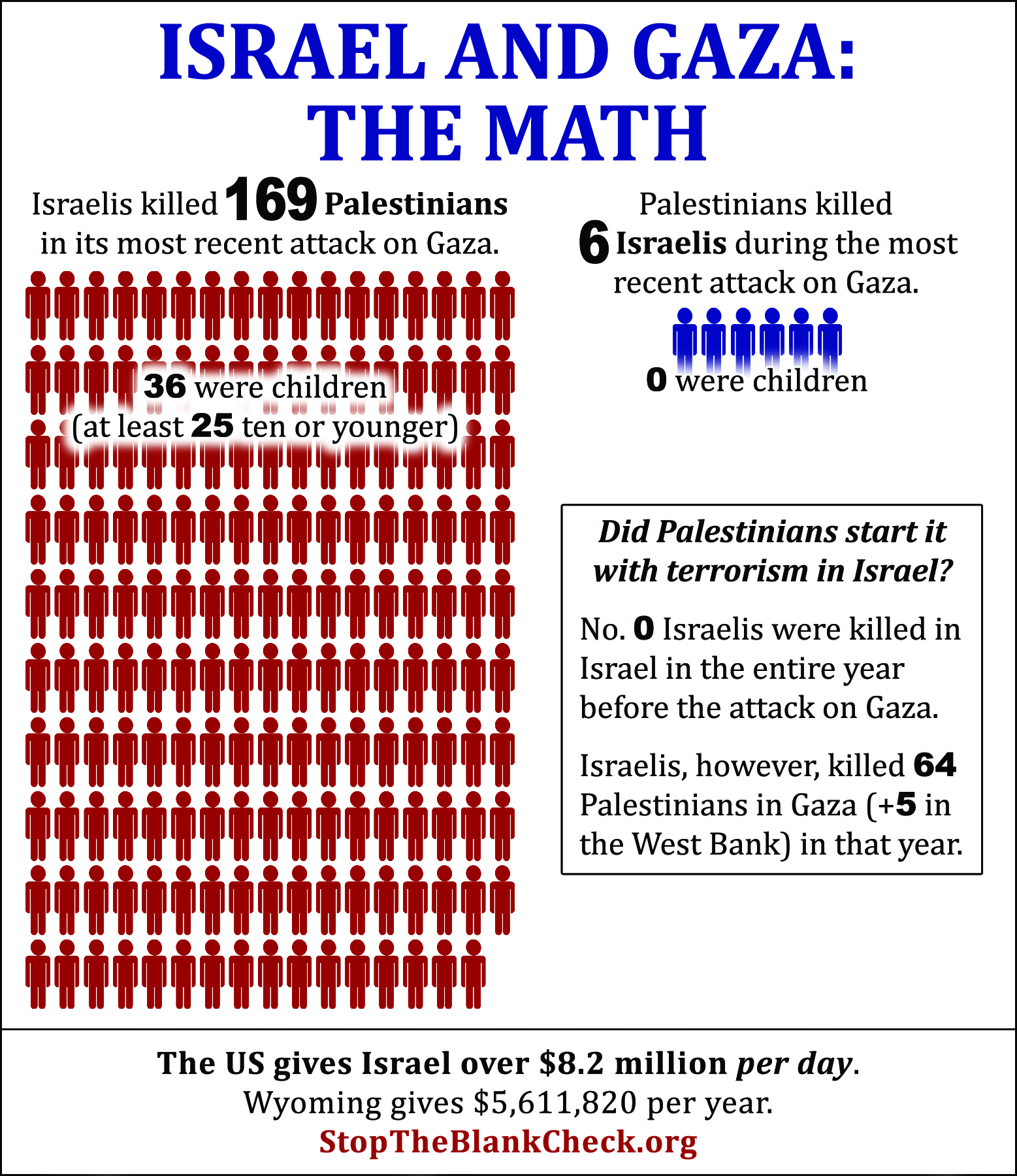
July 2023
https://www.theguardian.com/world/2023/jul/01/nowhere-in-palestine-is-free-west-bank-villagers-defenceless-against-rising-settler-violence
Scripture References:
14"The people shall hear, and be afraid: sorrow shall take hold on the inhabitants of Palestina."(KJV)
29"Rejoice not thou, whole Palestina, because the rod of him that smote thee is broken: for out of the serpent's root shall come forth a cockatrice, and his fruit shall be a fiery flying serpent."(KJV)
31"Howl, O gate; cry, O city; thou, whole Palestina, art dissolved: for there shall come from the north a smoke, and none shall be alone in his appointed times."(KJV)
29"The people of the land have used oppression, and exercised robbery, and have vexed the poor and needy: yea, they have oppressed the stranger wrongfully."
30"And I sought for a man among them, that should make up the hedge, and stand in the gap before me for the land, that I should not destroy it: but I found none."(KJV)
4"Yea, and what have ye to do with me, O Tyre, and Zidon, and all the coasts of Palestine? will ye render me a recompence? and if ye recompense me, swiftly and speedily will I return your recompence upon your own head;"(KJV)
Reference Links:
-
The Histories by Herodotus of Halicarnassus (484-425 BC)Herodotus of Halicarnassus 484 - 425 BC
An ancient Historian who references the country of Palestine several times in a book written in the 5th century B.C.
http://ncbible.info/MoodRes/History/Herodotus.pdf
-
The Invention Of The Jewish People
http://www.rafapal.com/wp-content/uploads/2012/01/Shlomo-Sand-The-Invention-of-the-Jewish-People-2009.pdf
- Calculating The "Economic Absorptive Capacity" Of Palestine: A Study Of The Political Uses Of Scientific Research (WWW.BRANDEIS.EDU) (2014/0707)
- A Synopsis of the Israel/Palestine Conflict (WWW.IFAMERICANSKNEW.ORG) (2012/1129)
- B'Tselem The Israeli Information Center for Human Rights in the Occupied Territories (WWW.BTSELEM)
- FAIR Fairness & Accuracy in Reporting (WWW.FAIR.ORG)
- Gaza War/Gaza Massacre (HTTP://EN.WIKIPEDIA.ORG) (10/31/11)
- Off the Charts Accuracy in Reporting of Israel/Palestine
- ISRAEL/GAZA Operation 'Cast Lead': 22 Days of Death And Destruction (mirrored PDF)
- Occupy Wall Street, Not Palestine! (HTTP://IFAMERICANSKNEW.ORG) (11/09/11) (PDF file)
- Robert Fisk: Why the Middle East will never be the same again (WWW.INDEPENDENT.CO.UK)
- ZIONIST CRIMES AGAINST JEWS (WWW.PALESTINE-ENCYCLOPEDIA.COM) (12/14/11)
- Israeli Persecution of Palestinian Children (HTTP://THEINTELHUB.COM) (02/28/12)
- Descriptive Geography and Brief Historical Sketch of Palestine By Rabbi Joseph Schwarz, 1850 (WWW.JEWISH-HISTORY.COM) (03/08/12)
- The Ethnic Cleansing of Palestine by Ilan Pappe (WWW.JEWISH-HISTORY.COM) (03/10/12)
- The Ethnic Cleansing of Palestine by Ilan Pappe (HTTPS://EN.WIKIPEDIA.ORG) (2016/0515)
- Yes, Virginia, Israel Does Murder Palestinian Children (HTTP://REVOLTOFTHEPLEBS.WORDPRESS.COM) (03/21/12)
- Nakba is part of Israel's history (WWW.HAARETZ.COM) (05/15/12)
- Racism pushing Palestinian citizens of Israel to Ramallah (WWW.COUNCILFORTHENATIONALINTEREST.ORG) (2012/0914)
- A Wake-up Call — Stuart Littlewood (WWW.VETERANSNEWSNOW.COM) (2012/0921)
- Radio Free Palestine (WWW.RADIOFREEPALESTINE.ORG.UK) (2012/0921)
- Stuart Littlewood : A Story of Betrayal - 1 (WWW.VETERANSNEWSNOW.COM) (2012/0921)
- Stuart Littlewood : A Story of Betrayal - 2 (WWW.VETERANSNEWSNOW.COM) (2012/0921)
- Israeli War Crimes: "Surgical Strikes" against Palestinian Children (WWW.GLOBALRESEARCH.CA) (2012/1125)
- Sniper Posts Pic of Child in Crosshairs (HTTP://NEWS.YAHOO.COM) (2013/0219)
- Israel destroys electricity grid in Nablus (WWW.COUNCILFORTHENATIONALINTEREST.ORG) (2013/0221)
- The Impact of the Conflict on Children (WWW.IFAMERICAKNEW.ORG) (2013/0310)
- DALET: Another Dirty Word in The Conspiracy to Steal The Land of Palestine (WWW.VETERANSTODAY.COM) (2013/0312)
- Albert Einstein Letter to The New York Times (HTTP://ARCHIVE.ORG) (2013/0515)
- No, Israel Does Not Have the Right to Self-Defense In International Law Against Occupied Palestinian Territory (HTTP://OCCUPIEDPALESTINE.WORDPRESS.COM) (2014/0722)
- Palestinian Christians in the Holy Land (HTTP://IMEU.ORG) (2014/0722)
-
July 2014
FAQ: Misperceptions about the Conflict in Gaza“As soon as the Palestinian Authority national unity government was announced in April, Israel set its sights on destroying it. It did so by first pressing for the government's isolation and, when that failed, it used the deaths of three Israelis (kidnapped in an area of the West Bank that is entirely under Israel's control) to demonize Hamas in the Gaza Strip.
https://imeu.org/
- The lost Palestinian Jews (WWW.JPOST.COM) (2014/0813)
- Kibbutz (HTTPS://EN.WIKIPEDIA.ORG) (2014/0819)
- Hamas Keys (WWW.THEKEYOFKNOWLEDGE.NET)
- Questions to ask your pro-Israeli friends (WWW.REDRESSONLINE.COM) (2014/0824)
- Special Report | “You know what is happening”: Letter to an Israeli friend (HTTP://CEASEFIREMAGAZINE.CO.UK) (2014/0930)
Worth reading. A letter detailing the Palestinian perspective.
- Threatened photographs are window on historic Palestine (HTTP://ELECTRONICINTIFADA.NET) (2014/0922)
- The UK Parliament Just Voted To Recognise The State Of Palestine…By A Landslide! (HTTP://ADDICTINGINFO.ORG) (2014/1013)
- Germany made Palestinians "indirect victims of Holocaust," says author Max Blumenthal (HTTP://ELECTRONICINTIFADA.NET) (2014/1115)
- OCCUPIED PALESTINIAN TERRITORY Humanitarian Needs Overview 2015 (WWW.OCHAOPT.ORG) (2014/1227)
A PDF summary chart
- PROTECTION OF CIVILIANS - Reporting Period: 16-22 December 2014 (WWW.OCHAOPT.ORG) (2014/1227)
Finally! Good news.
A United Nations PDF summary chart. Take it for what it is worth.
ISRAELI APARTHEID:
- Don't Ignore The Roots Of Discrimination (WWW.THEDAILYBEAST.COM) (2014/1112)
-
Israel Palestine Cease Fire Violation Keys:
-
Massacre Keys:
Pro Zionist Position:
- "PALESTINE" - Never an Arab Country (WWW.JEWISH-HISTORY.COM) (03/10/12)
NOTE: It is unsettling how easy it is to dispute this paper. It makes statements of 'truth' that simply are not factual and can easily be disputed.
- The Big Map of the Empty Land (WWW.ZEEVGALILI.COM) (2013/0216)
NOTE: This doesn't agree with the Maps reference previously. Let's see now, the most agriculturally diverse real estate on the planet, a place that has been a hub of middle east trade for centuries and the Zionists would have us believe that it laid uninhabited for ages.
- A Treasury of Photographs of Empty Palestine (WWW.ZEEVGALILI.COM) (2013/0216)
NOTE: Interesting that the caption reads "A Treasury of Photographs of Empty Palestine" but there are only two pictures of the land shown.
MIDDLE EAST PEACE:
- Lies of the Israeli Peace Movement (HTTP://ALETHONEWS.WORDPRESS.COM)
"Imagine those who rule the US holding sessions with the Vietnamese on the harm the Vietnamese did to them in the Vietnam War. Imagine the white plantation owner having public meetings in which injustices done to him by his slaves could be fully and sensitively aired. Imagine the US majority - the colonial settlers of what the natives once called Turtle Island — sitting down with the Sioux or Apache or Ojibwa, saying it was time "both sides" admitted to wrongdoing."
- Debunking Israel's self-defense argument (HTTP://AMERICA.ALJAZEERA.COM) (2014/0929)
- The Myth of the Generous Offer - Distorting the Camp David negotiations (2016/0518)
KEY DOCUMENTS:
- Key Documents (HTTP://ISRAELIPALESTINIAN.PROCON.ORG)
- The White Paper of 1939 (a.k.a. MacDonald White Paper) (HTTP://EN.WIKIPEDIA.ORG)
- British Mandate: A Survey of Palestine, prepared by the British Mandate for UN prior to proposing the 1947 partition plan (WWW.PALESTINEREMEMBERED.COM)
NOTE: This document dispels the myth that the Holy Land was a desert wasteland prior to the arrival of the European Jews
- United Nations - REFERENCE LIBRARY ON PALESTINE (HTTP://UNISPAL.UN.ORG)
- Palestine and Transjordan Administration Reports 1918-1948 (WWW.ARCHIVEEDITIONS.CO.UK)
- British Militay History - Middle East 1930 - 1947 (WWW.BRITISHMILITARYHISTORY.CO.UK)
- British Mandate of Palestine (HTTP://WWW-PERSONAL.UMICH.EDU)
- U.S. Foreign Aid to the Palestinians (HTTP://FPC.STATE.GOV) (2015/0213)
(It would appear that since the Palestinians did not accept the implementation of the Israeli/American puppet government, they have been labeled terrorists and foreign aid has been curtailed.)
LEGAL STATUS:
- Why the PA can be sued in the US for “terrorism” but Israel can't (HTTP://ELECTRONICINTIFADA.NET)
MAPS OF THE REGION:
- Maps of the Region (HTTP://ISRAELIPALESTINIAN.PROCON.ORG)
DEATH STATISTICS:
- Deaths in the Conflict, 1987-2012 (HTTP://ISRAELIPALESTINIAN.PROCON.ORG)
POPULATION STATISTICS:
- Population Statistics (HTTP://ISRAELIPALESTINIAN.PROCON.ORG)
STATEHOOD:
- Israel condemns UK parliament's Palestine recognition vote (WWW.MIDDLEEASTEYE.NET)
Interesting to note how Israel didn't have any problem when Israel was recognized as a state without the Palestinian consent. Israel has enjoyed being in total control of the situation since 1948 while they talked out both sides of their mouth about peace.
Israel is afraid of this vote because soon the Palestinians will be able to make the same claims against the Israelis that the Israelis have made against the Palestinians since 1948.
Israel makes all sorts of phony symbolic gestures towards a resolution to this injustice, however, if one looks closely they will find that Israel NEVER commits to ANY binding resolution on the state of Israel. Israel still hasn't even defined their borders nor have they been willing to commit to, or abide by, ANY resolution that limits Israel in any way. Israel has gone on record as stating they do not feel the need to listen to ANYONE who disagrees with them.
Israel clearly intends to do everything they can to suppress and subjugate the Palestinian people so they can achieve their goal of taking control of the Middle East.
The Israelis routinely violate, murder, oppress, and steal from the Palestinian people because they know the Palestinians have no recourse but to plead with their merciless occupying oppressors to stop butchering them.
While it concerns me that this vote does not recognize the oppression that Palestinian people have suffered to date at the hands of the Israelis, I am hopeful that it is a first step in putting and end to the Israeli apartheid tyranny.
Only when Israel recognizes that they can no longer infiltrate and control the world's governments and that the world stands united against the godless Israeli government will a resolution to Israeli aggression be achievable.
- Israeli embassy in Britain rejects House of Commons' recognition of Palestine (WWW.MIDDLEEASTMONITOR.COM)
The Israelis are such monstrous hypocrites! The achieving of an Israeli State most certainly did NOT come through negotiation rooms and most certainly DID come by independent decisions that were voted on outside of the negotiations between Israelis and Palestinians.
- Irish upper house backs Palestinian state (WWW.HAARETZ.COM)
WEB SITES:
- The Leftern Wall (HTTP://THELEFTERNWALL.COM) (2012/1123)
- Palestine Remembered (WWW.PALESTINEREMEMBERED.COM)
- Breaking the Silence
- Understand the Israeli - Palestinian Apartheid In 11 Images (HTTP://TRIVALROOM.COM)
(NOTE: This site has some stunning graphics exposing the injustice.)
- Palestinian National Authority's Ministry of Information (WWW.MINFO.GOV.PS) (2014/0814)
Who Are The Palestinians?:
-
The Origin of Palestinians and Their Genetic Relatedness With Other Mediterranean Populations
The beast has now hidden this page behind a pay wall.
https://www.researchgate.net/profile/Eduardo_Gomez-Casado/publication/11802415_The_origin_of_Palestinians_and_their_genetic_relatedness_with_other_Mediterranean_populations/links/09e4150d0328024622000000.pdf
Video Links:
(2012-0103)
(2013-0730)
(2014-0930)
(2014-1120)
(2014-0307)
Presentation at the National Summit to Reassess the U.S.-Israel "Special Relationship" on March 7, 2014 at the National Press Club.
(2023-NOVEMBER)
(0:38:51)
https://rumble.com/v3uvyvi-you-dont-know-your-history.html
(2023-NOVEMBER)
(0:31:38)
https://rumble.com/v3vk4od-viewing-the-allowed-atrocities-in-gaza-palestine-by-corrupt-double-standard.html
